Hello, friends, Happy Christmas!
It’s time again for the Christmas Quiz based on my blogs from 2022. I trust you are all OK in these difficult times and send you my very best wishes for 2023. I am sure that, like me, you hope that it will bring happier times for everyone than the year gone by.
Here are this year’s questions.
1. These families enjoying the pleasures of a sandy beach are not at the seaside. Where are they?

2. In the Seething Lane Garden a paving stone has a carving showing a pair of forceps and a bladder stone. Whose surgical operation is represemted?
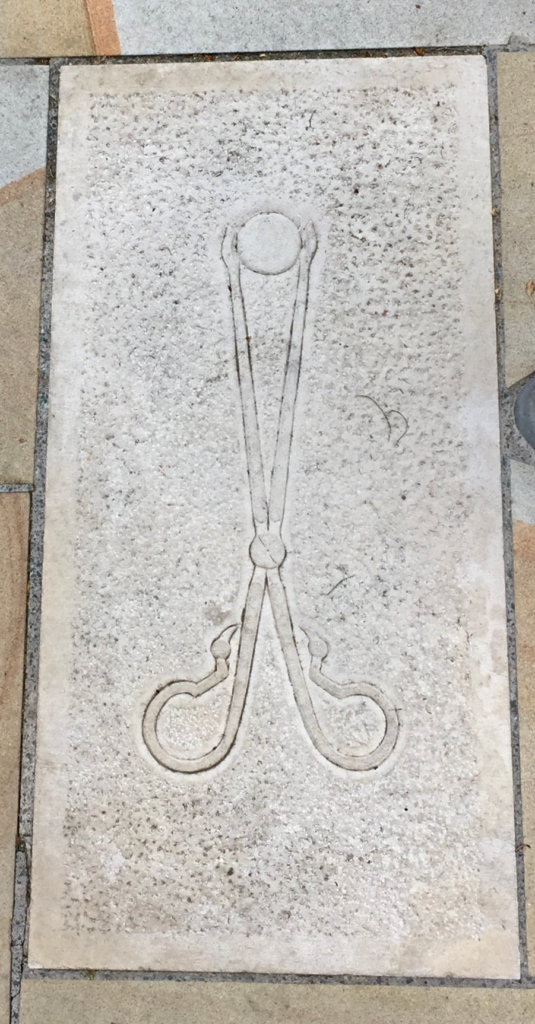
3. Where will you find the extraordinary tomb of Dame Mary Page?

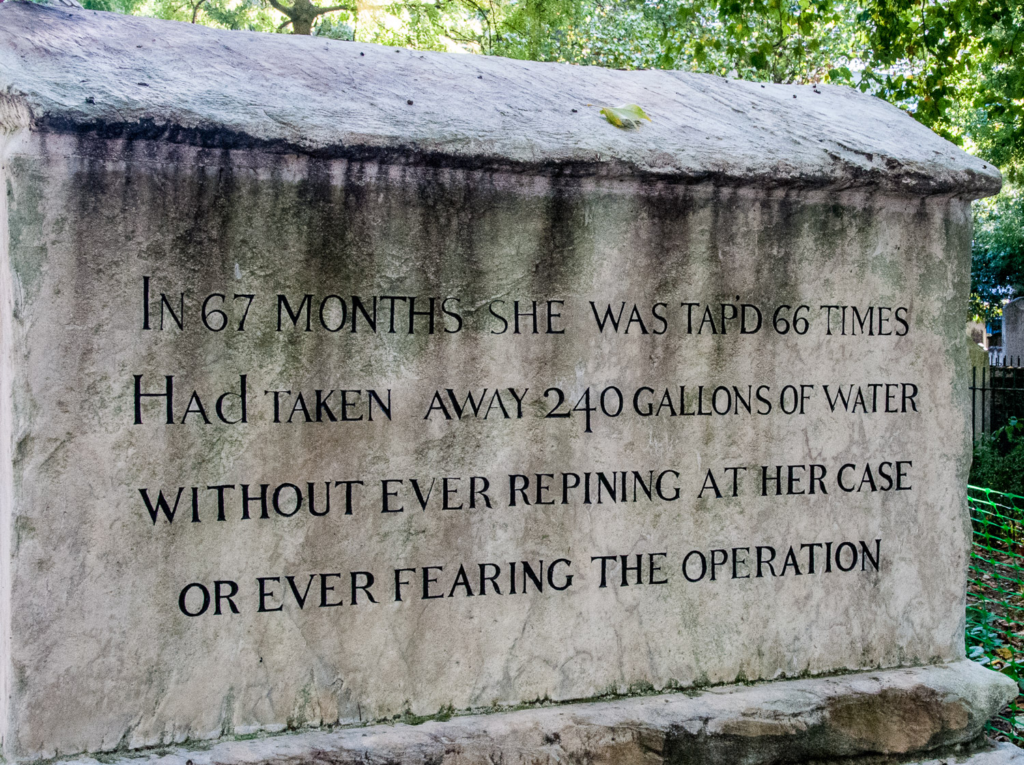
4. In St Margaret Lothbury you’ll find this lovely stained glass window showing the motto of one of the City Livery Companies – True Hearts and Warm Hands. What Livery Company is it?
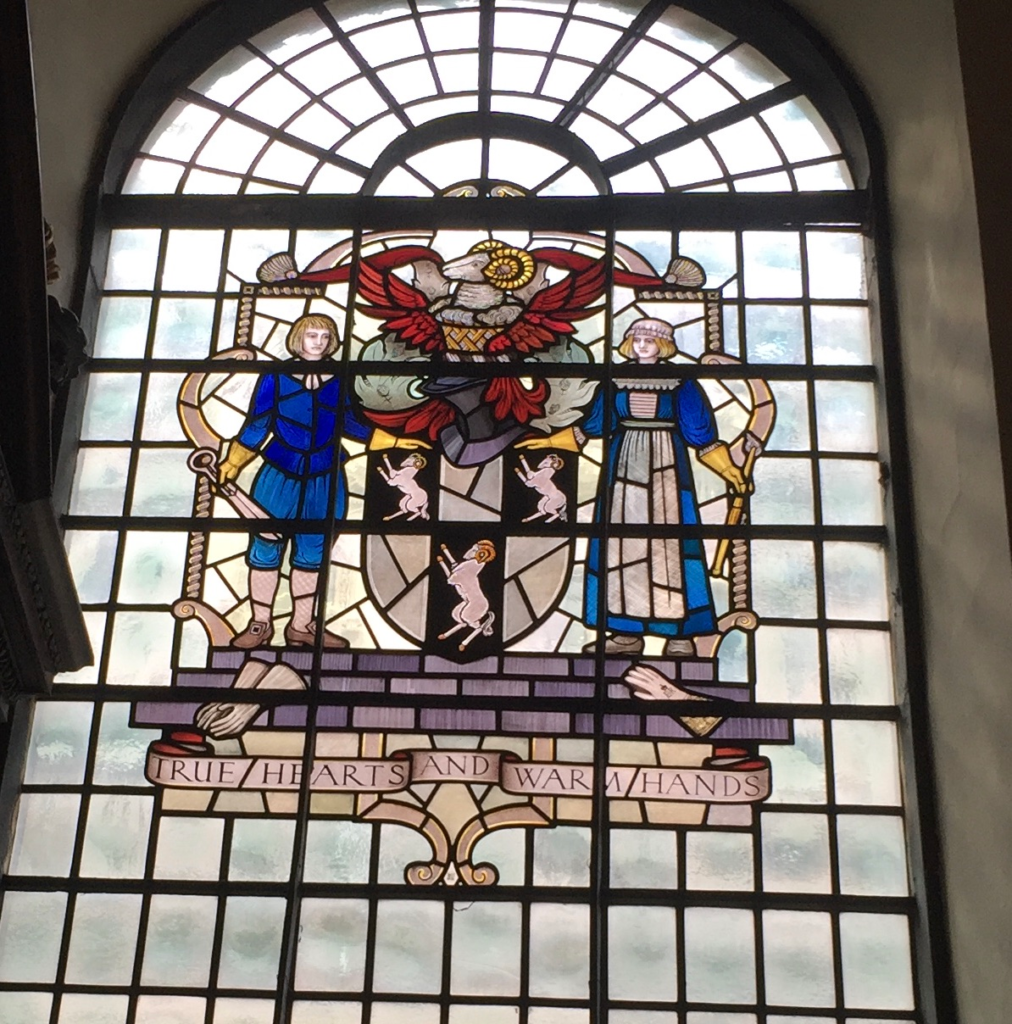
5. What is this chap up to and where is he?
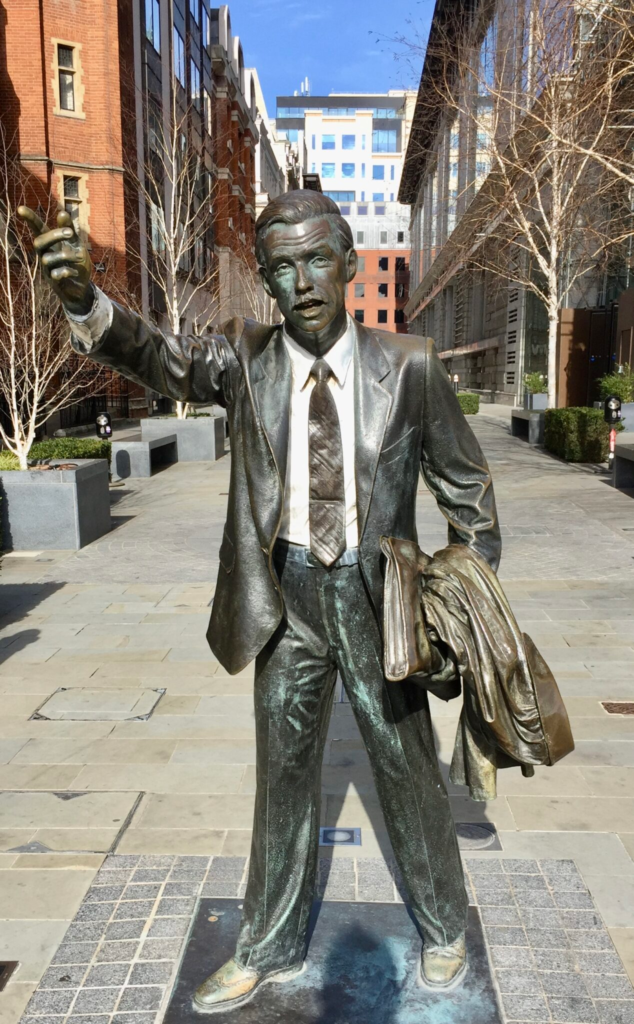
6. In 1818 a coffin was patented that would be extremely difficult to open. It was made of iron with spring clips on the lid and an example is on display in St Bride’s Church Fleet Street …
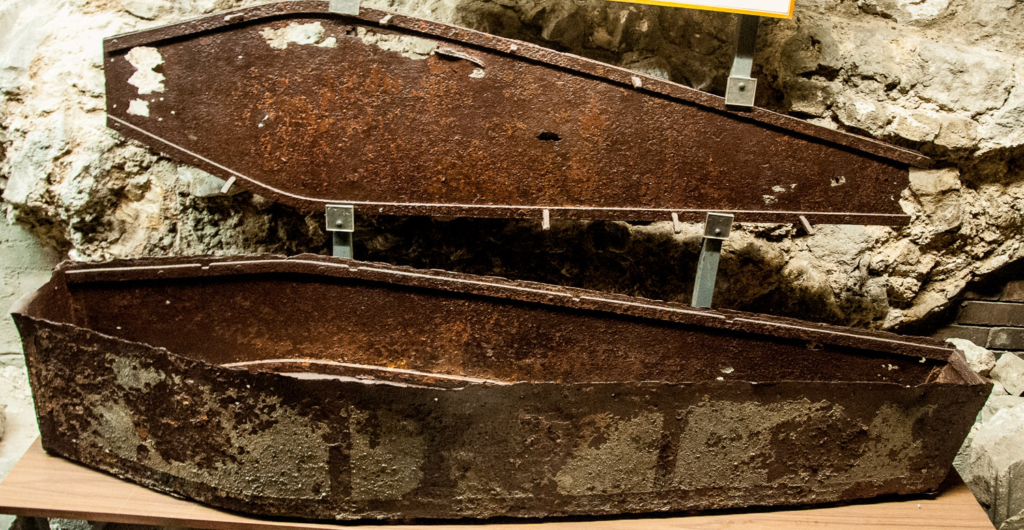
Why did people believe such an invention was needed?
7. A couple got married here in Wesley’s Chapel on 13 December 1951 and one of them went on to become Prime Minister, later donating this communion rail in 1993 …
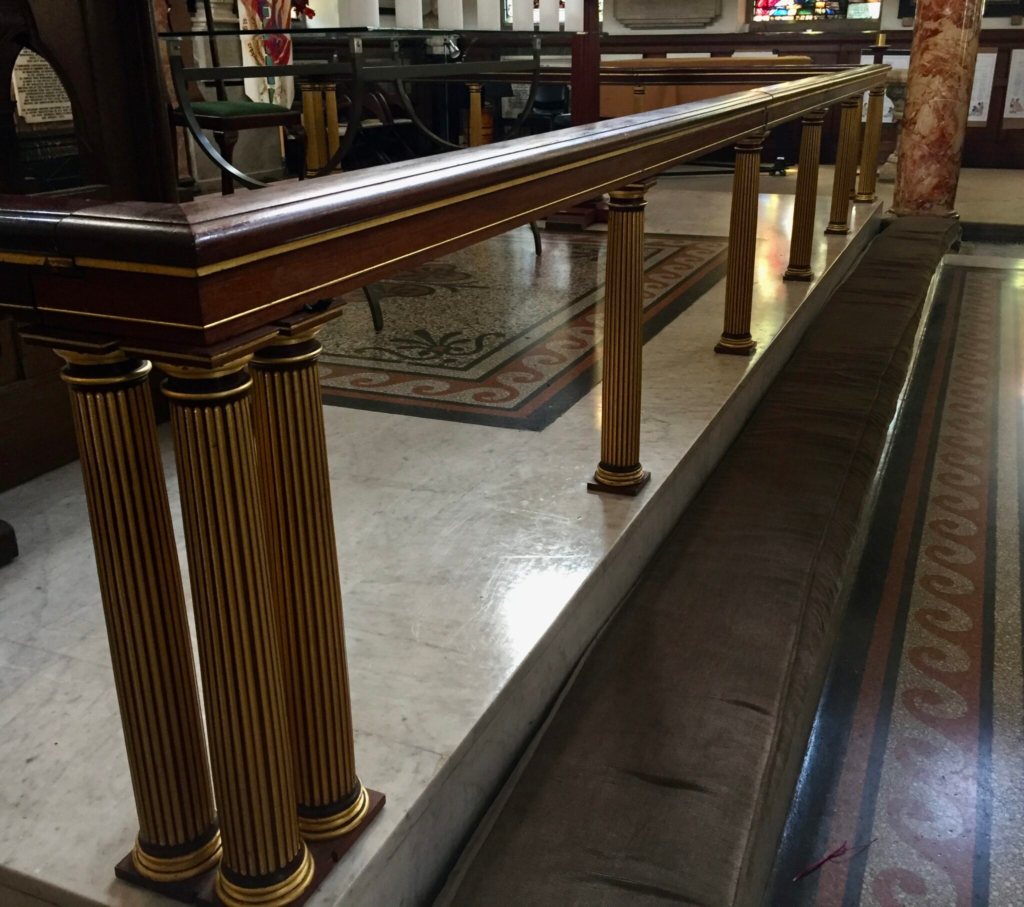
What were the names of the couple?
9. Outside the Guildhall, this sculpture shows a man pausing on Highgate Hill having just heard the bells of St Mary-le-Bow ring out a message. He’s giving it some serious thought as his cat curls around his legs (note the tear in his leggings indicating that he has experienced hard times) …
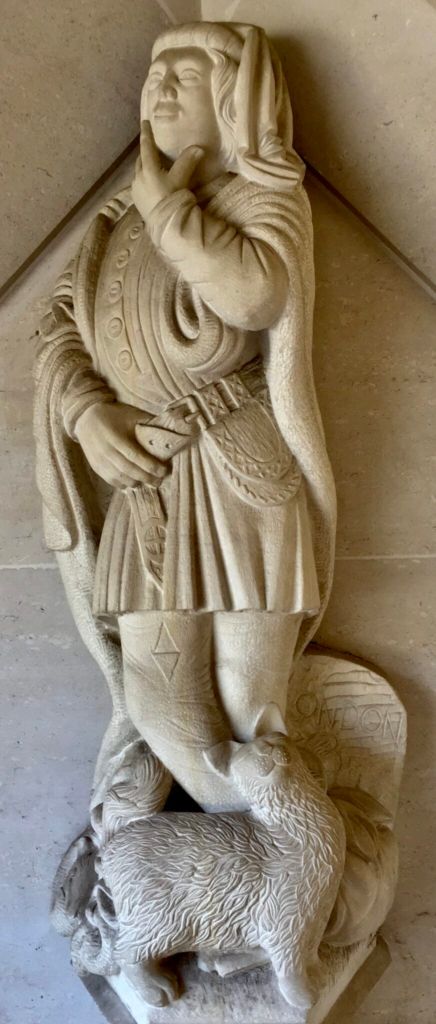
Who is he? And what was the message he heard?
10. What were these items of footwear for and what City church hosts this little exhibition?
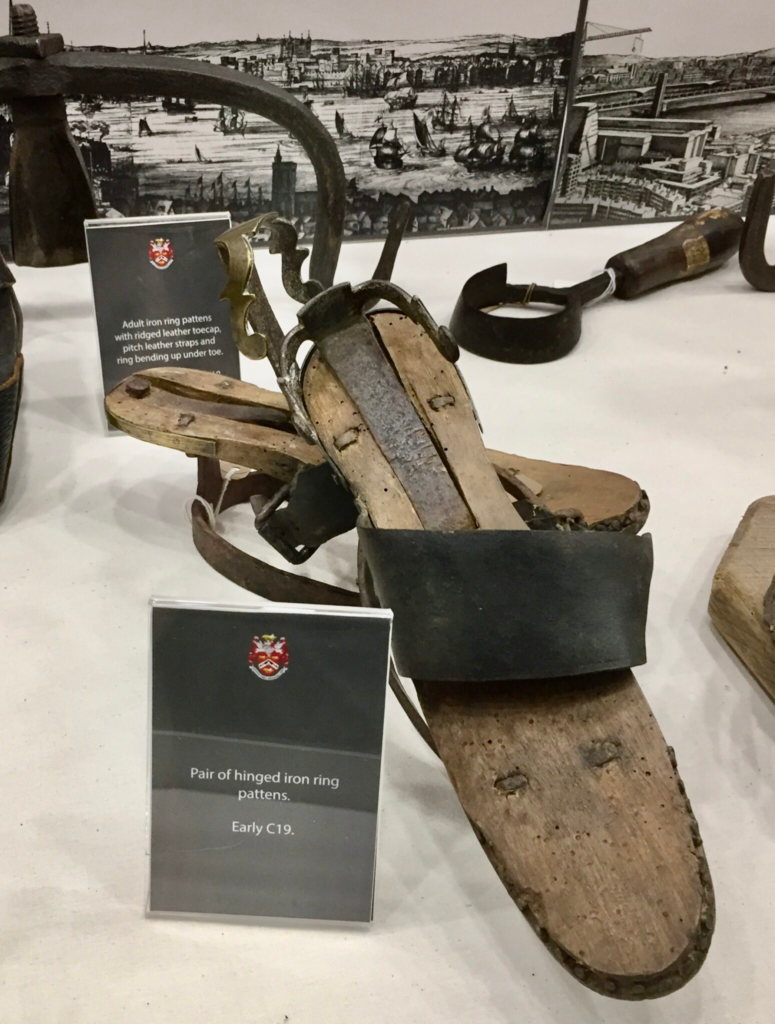
11. This door in Leadenhall Market at 42 Bull’s Head Passage is featured in a Harry Potter film. What part did it play?
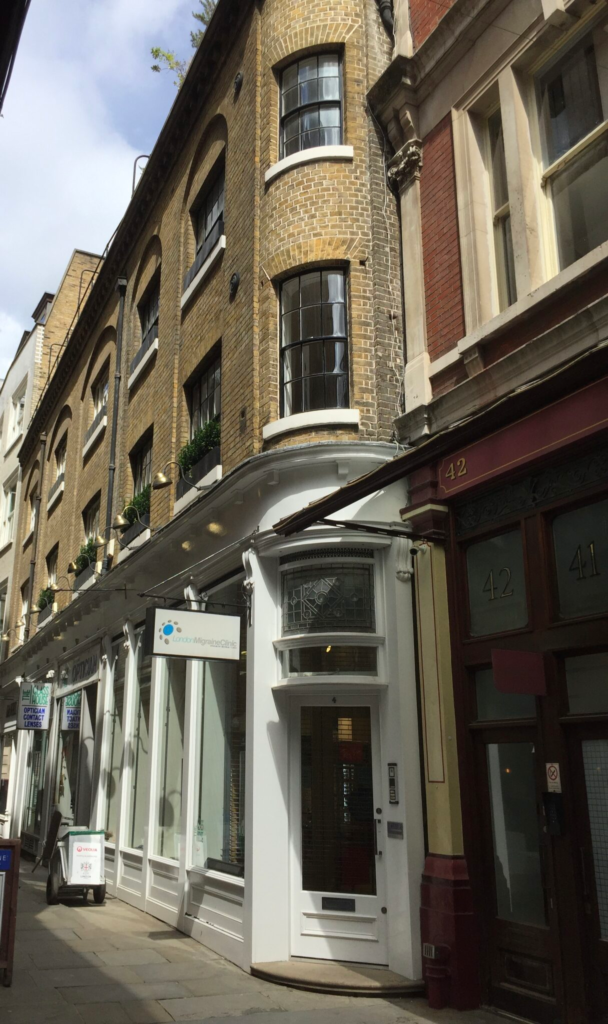
12. Looking down onto the Thames River bed one can often see red tiles, bits of chalk and oyster shells. How did they get there?
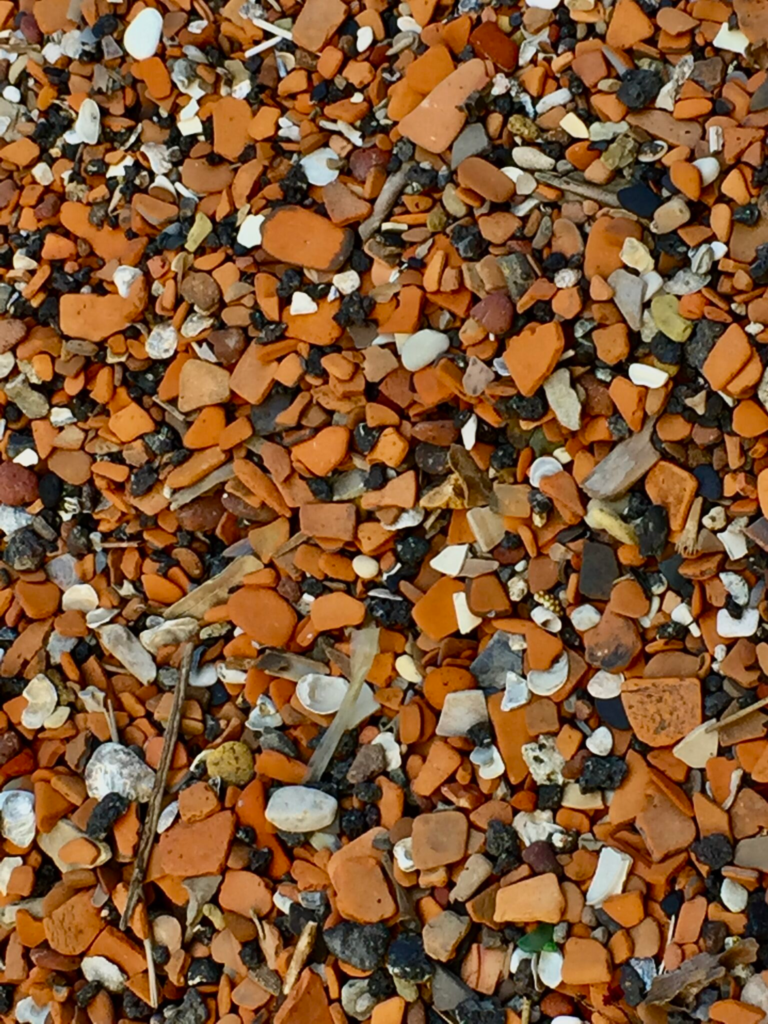
13. What busy London railway terminus was home to the London Necropolis Company whose trains carried coffins containing deceased Londoners out of the capital to the new cemetery at Brookwood?

14. What East End Gallery boasts these beautiful leaves covered in gold leaf by the artist Rachel Whiteread?
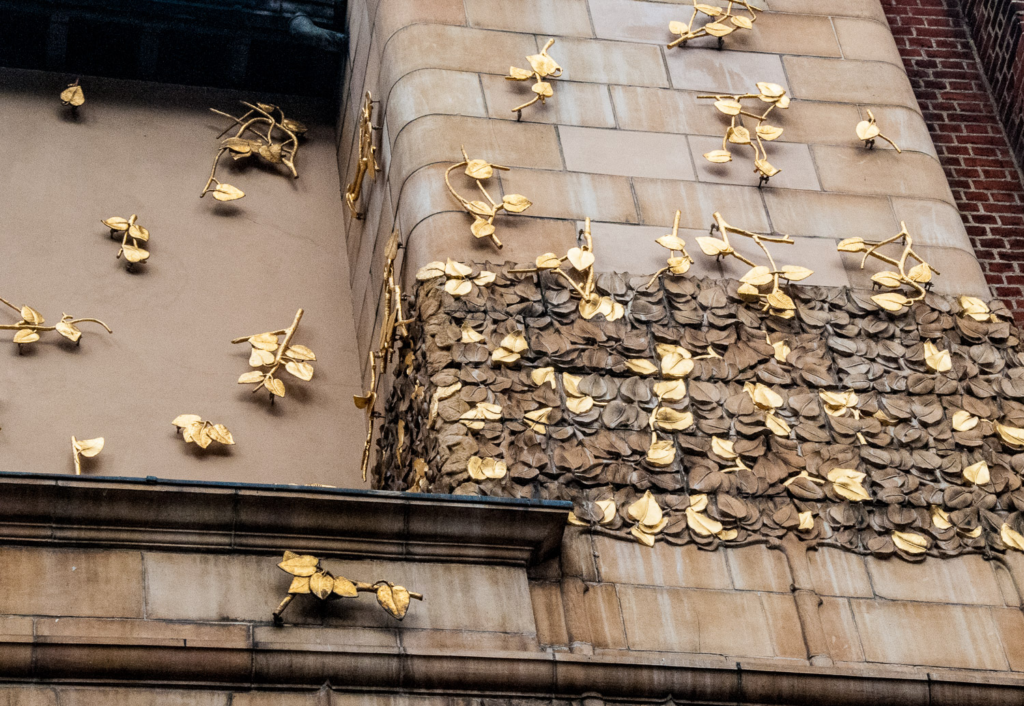
15. The tree in the background is Cercis siliquastrum, but what is its more sinister nickname?

16. This sculpture is part of the 2022 Sculpture in the City project. Where can it be found?
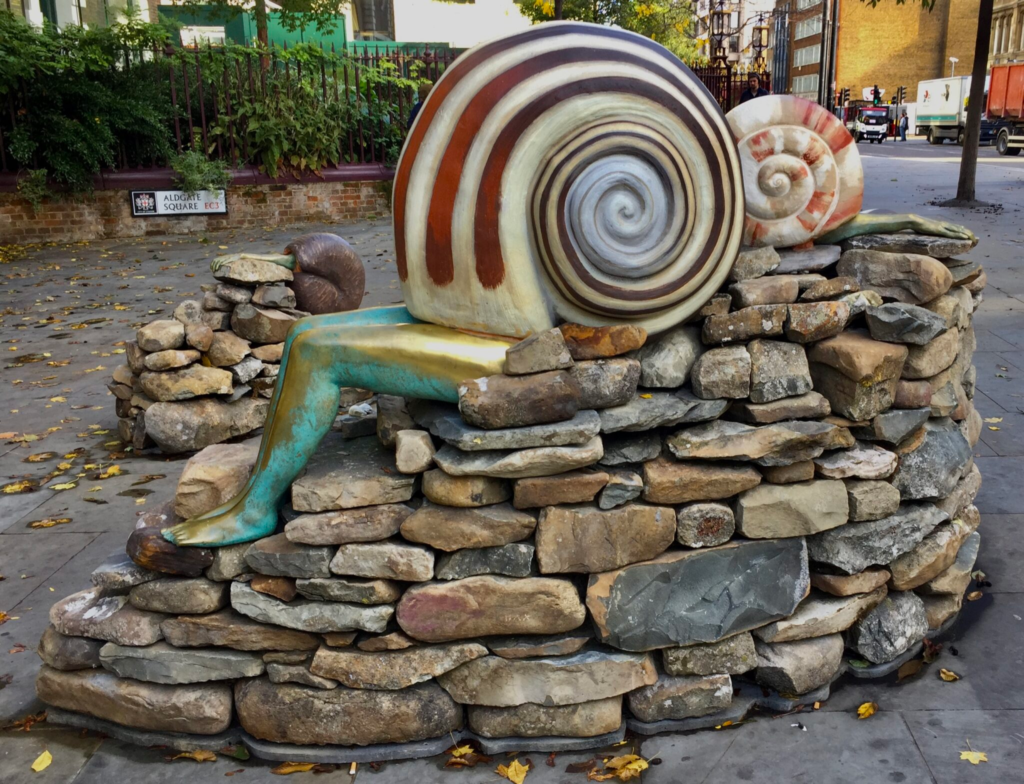
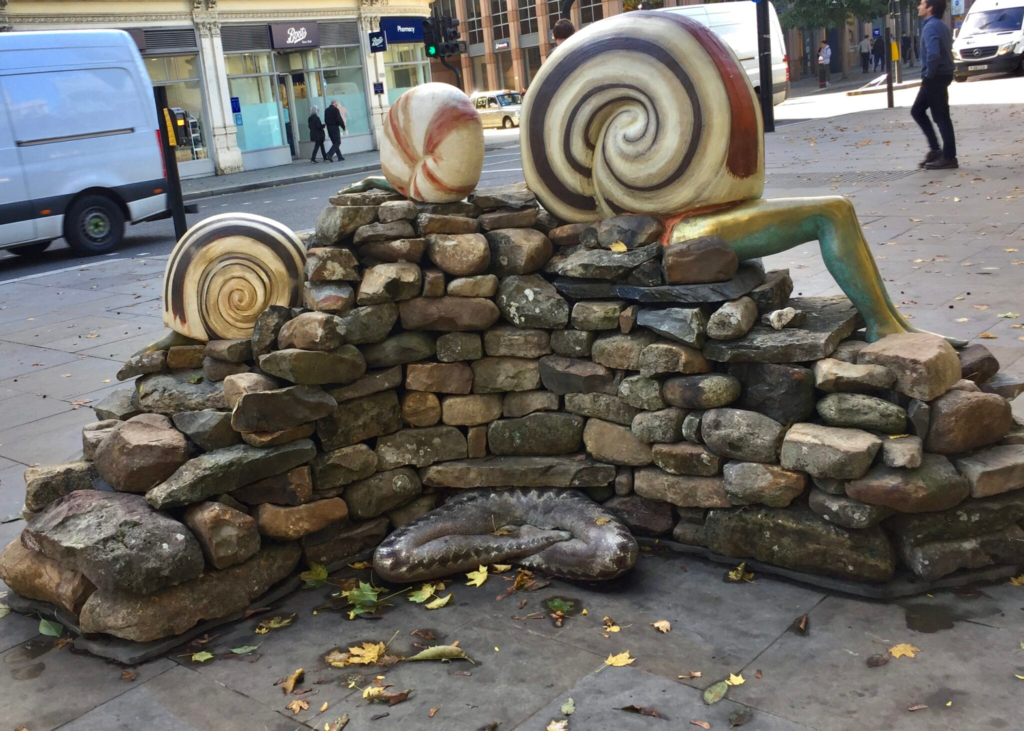
17. This is the face of a young woman found drowned in the River Seine in Paris in the late 1880s. No one could identify the body, but the pathologist reportedly became fascinated with her serene expression and commissioned a death mask. Soon multiple reproductions were on sale throughout Paris …
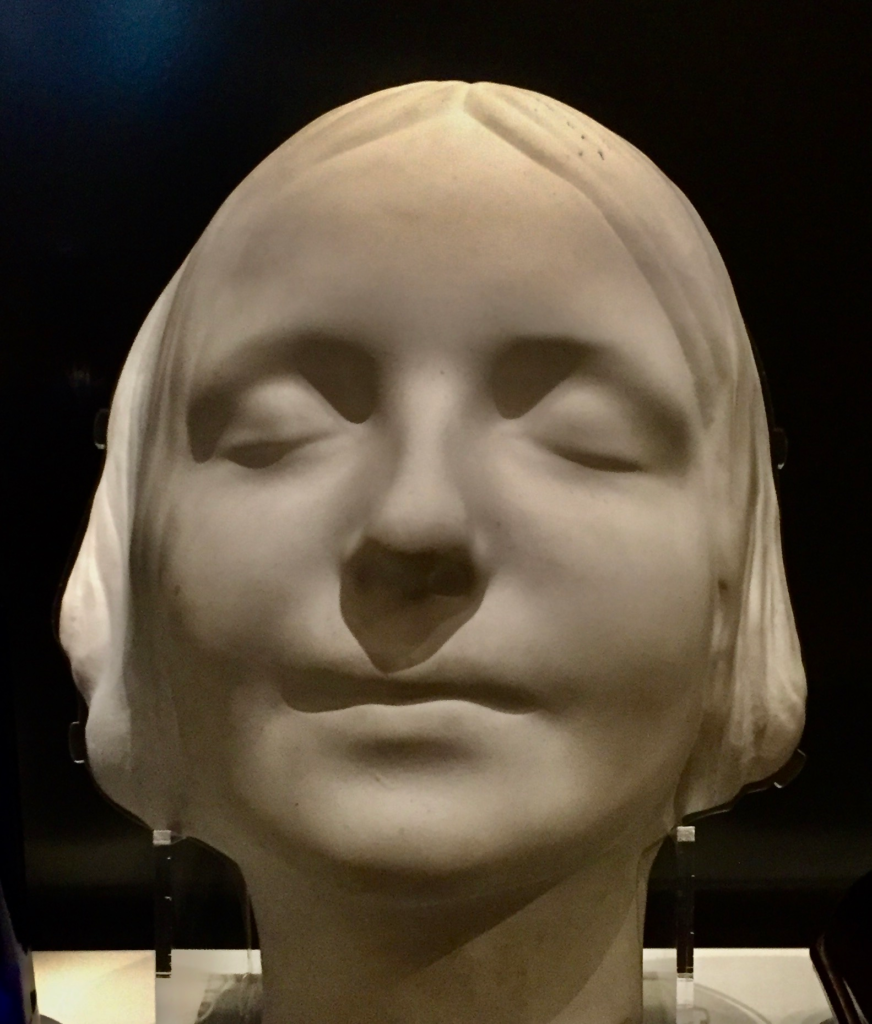
However, she later became very well known for another reason. What was it?
18. Described as ‘the most outstanding English poet before Shakespeare’ here he is in the Guildhall Art Gallery …
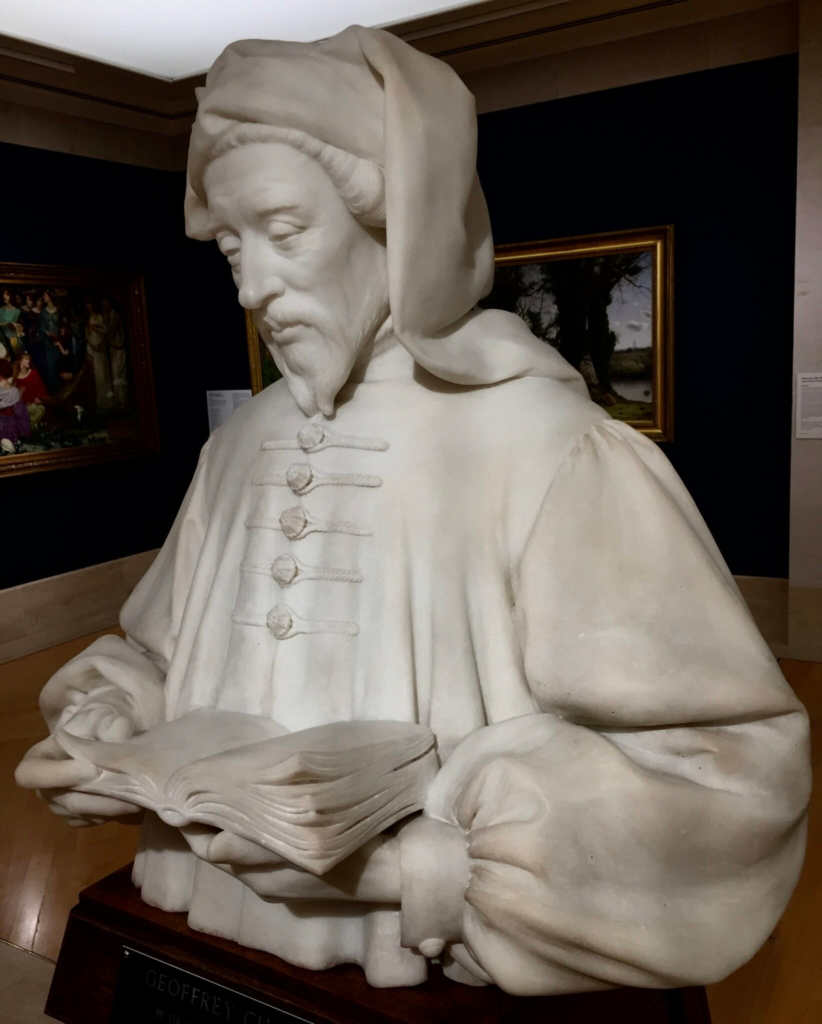
Who was he and what is his most famous work?
19. This church’s dome, dating from 1672, was Christopher Wren’s prototype for the dome of St Paul’s Cathedral. It was the first classical dome to be built in England at the time. What’s the name of the church?
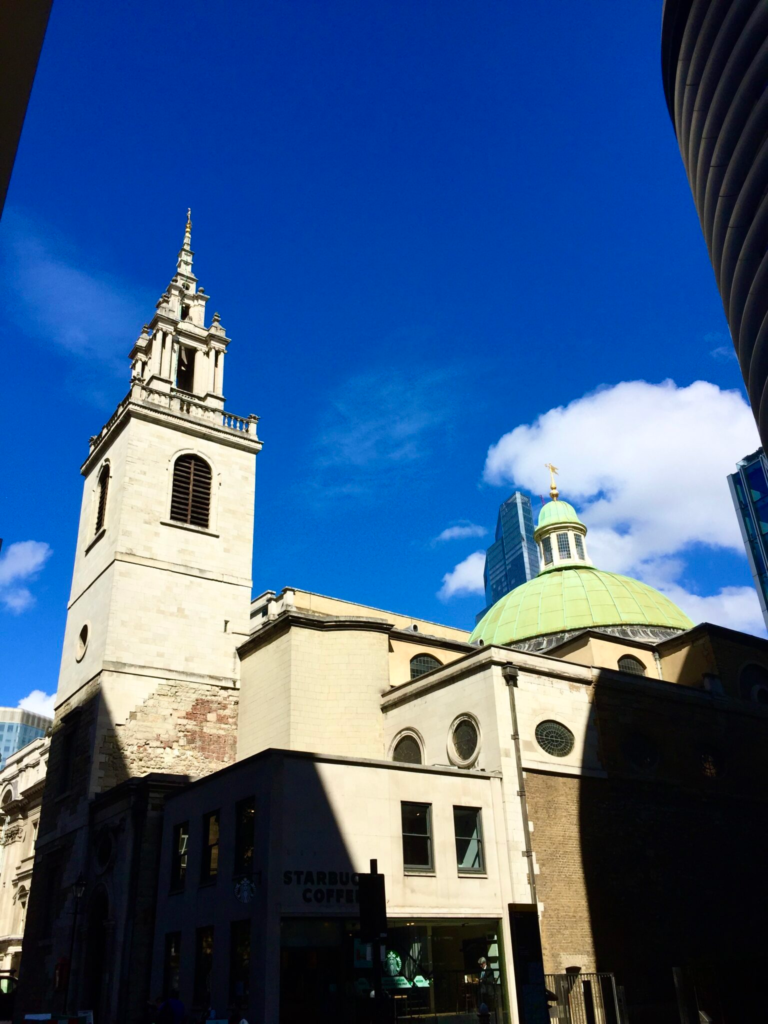
20. This is the entrance to what was once one of the most heavily guarded areas areound St Katharine Docks. Can you guess what was stored there?
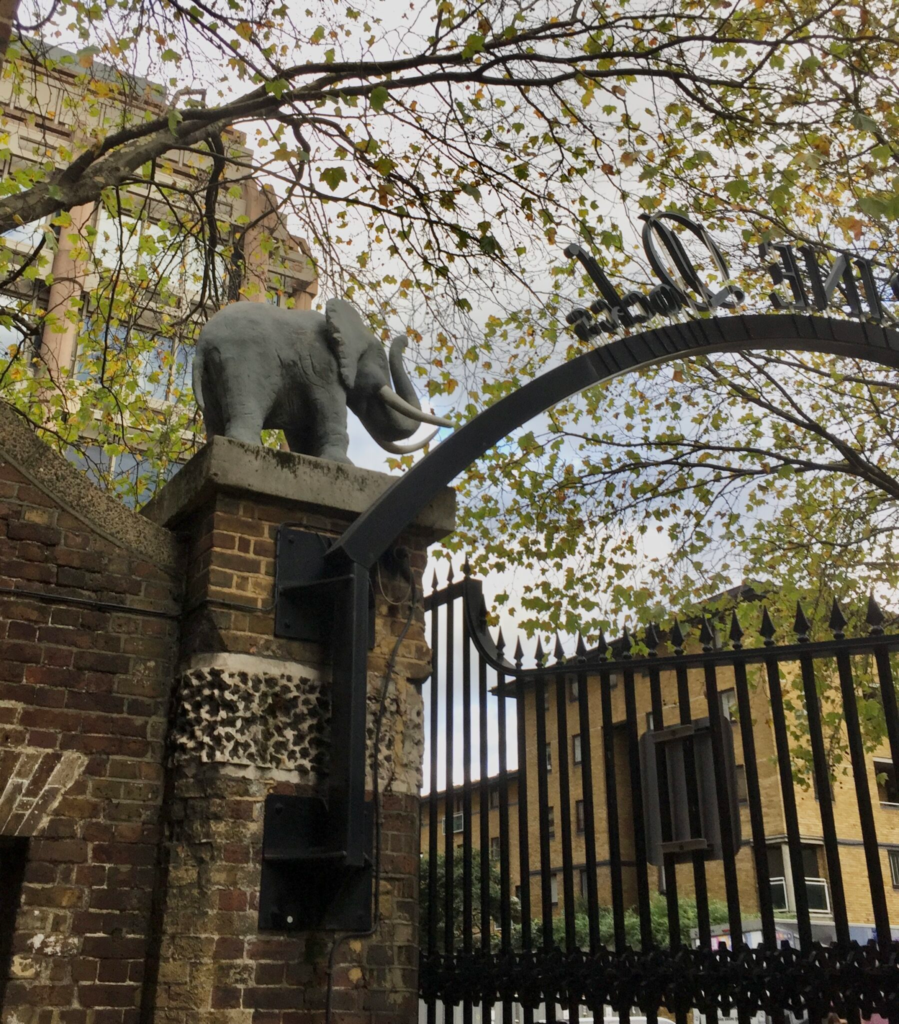
Answers to the quiz along with links to previous blogs and sources :
1. People had walked on the Thames foreshore for thousands of years but Tower Beach, as it was known, was created in 1934 by bringing 1,500 barge loads of sand to the site alongside the Tower of London. When it was officially opened, King George V decreed that the beach was to be used by the children of London, and that they should be given ‘free access forever’. Read all about it here along with some great images.
2. Samuel Pepys – at the age of 25 he survived an operation to remove a bladder stone ‘the size of a tennis ball’. You’ll find my blog about the garden here.
3. In the Bunhill Burial Ground. It appears that Mary Page suffered from what is now known as Meigs’ Syndrome and her body had to be ‘tap’d’ to relieve the pressure. She had to undergo this treatment for over five years and was so justifiably proud of her bravery and endurance she left instructions in her will that her tombstone should tell her story.
4. It’s The Worshipful Company of Glovers of London. Here’s the link to the blog about this window and other fascinating aspects of the church.
5. Taxi! by the American Sculptor J Seward Johnson is cast bronze and is now interestingly weathered. If you think the baggy trousers, moustache and side parting are erring on the retro, that’s because this particular office worker was transferred from New York in 2014. It was sculpted in 1983 and originally stood on Park Avenue and 47th Street. It’s now on the north side of Queen Victoria Street. Read more about what’s in the fairly close vicinity here.
7. Until well into the 18th century the only source of corpses for medical research was the public hangman and supply was never enough to satisfy demand. As a result, a market arose to satisfy the needs of medical students and doctors and this was filled by the activities of the so-called ‘resurrection men’ or ‘body snatchers’. Some churches built watchtowers for guards to protect the churchyard, but these were by no means always effective – earning between £8 and £14 a body, the snatchers had plenty of cash available for bribery purposes.
One answer was a coffin that would be extremely difficult to open and such an invention was patented by one Edward Bridgman of Goswell Road in 1818. Read more about the St Bride’s Museum where it’s on display here.
8. Margaret Thatcher (then Margaret Roberts) married Denis Thatcher here on 13 December 1951 and both their children were christened here. Read more about the Chapel here.
9. Dick Whittington is on Highgate Hill and the message from the bells of St Mary-le-Bow declares ‘Turn again Whittington, thrice Lord Mayor of London’. Well, the bit about him being Lord Mayor is true, and it was four times rather than three, but two of the terms were consecutive. Unlike the pantomime story, the historical Richard Whittington (1358-1423) was the youngest son of Sir William Whittington, a wealthy Gloucestershire Squire. By his early thirties, he was a successful London mercer and extremely weathy in his own right (and there is no record of him ever owning a cat). You can read more about him here.
10. Pattens were under-shoes slipped on to protect the wearer’s shoes or clothing – not least from the filth on the streets in the Middle Ages. The church hosting the lttle display is St Margaret Pattens and has long had an association with the Pattenmakers’ Guild.
11. It plays the door of The Leaky Cauldron, a popular wizarding pub. Here Hadrig leads Harry through the ‘pub door’ …
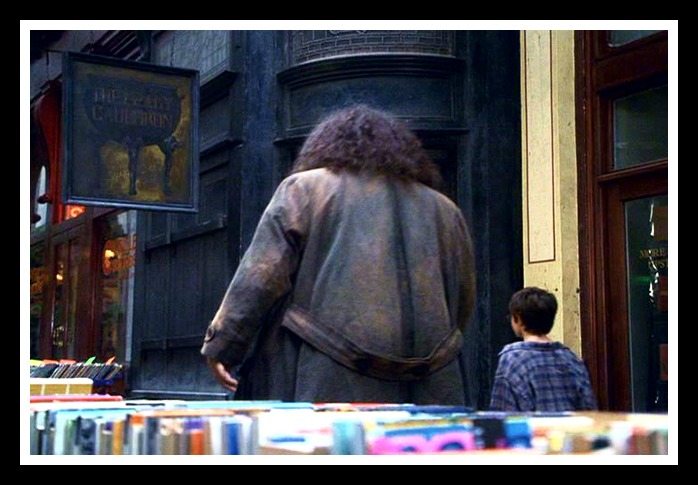
12. The picture, taken at Queenhithe Dock, shows a collection of medieval (and possibly Roman) roof tiles. Oysters were once a common food for the population (even poor folk) and large chalk beds were once laid down to provide a soft settling place for barges at low tide.
13. It was Waterloo Station. Read more about the Necropolis company’s fascinating history here.
14. It’s the Whitechapel Gallery – read more about it and see more images here.
15. It is also known as the ‘Judas tree’. This comes from the legend that Judas Iscariot, full of shame after his betrayal of Jesus, hanged himself from one of its branches. You’ll find the relevant blog here.
16. Aldgate Square – if you look closely you can just read the street sign. Here’s a link to this and other works.
17. In the 1950s a Norwegian toymaker, Asmund Laerdal, was commissioned to produce a mannequin in which people could practise mouth-to-mouth and cardiopulmonary resuscitation (CPR). Seeking a non-threatening model, he chose L‘Inconnue (as she was known) and when his mannequin was mass-produced she became world-famous for a second time, known to this day as ‘Resusci Anne’. The death mask pictured here is held in the fascinating Museum of the Order of St John.
18. This is Geoffrey Chaucer and the most famous of his works was The Canterbury Tales.
19. It’s St Stephen Walbrook. Read about a visit I made there four years ago here.
20. Ivory, of course, in a specially designed building. Read all about it and other fascinating sights around St Katharine Docks here.
I hope you enjoyed doing the Quiz and found it fun – my very best wishes for Christmas and the New Year.
If you would like to follow me on Instagram here is the link …
